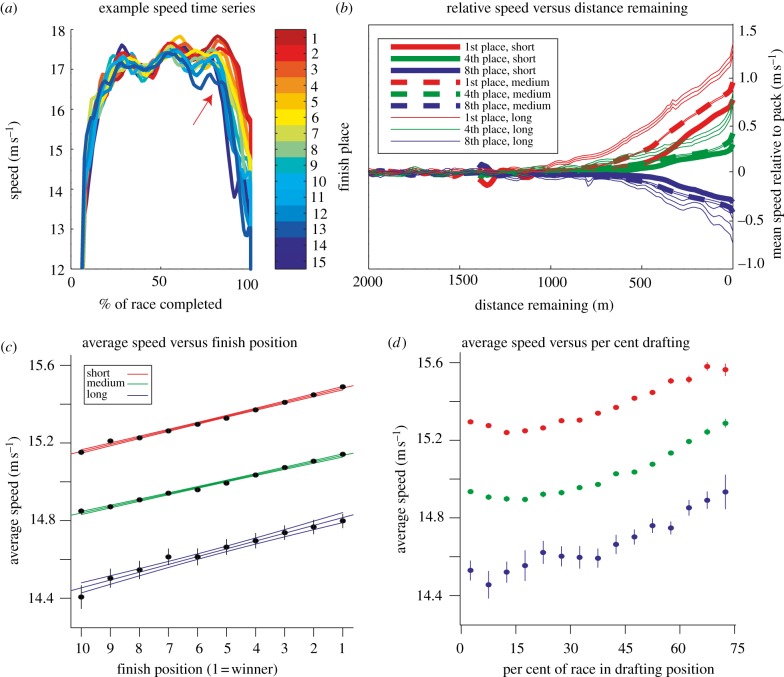Figure 1.
On average, horse races are decided in the last 500 m of the race, at which point the speed of competitors diverges (red arrow in (a), showing data from a single race, and (b): mean ± s.e.m. of speed of horses relative to pack average, across races by finish place and race length). These were computed for each combination of three finish places (1st, 4th and 8th) and three race distances (short: distance less than 1445 m or seven furlongs and 40 yards; medium: race distance greater than 1445 m and less than 2890 m, or 1 mile six furlongs and 80 yards; long: race distance greater than 2890 m). The n value for these bins varied between a minimum of 119 individual horse starts to 2342 horse starts, with fewer starts at large distances remaining in the long races. Small margins in average speed (0.13 m s−1 or 0.9% between 1st and 5th place, (c) make the difference in winning, and horses that spend time drafting behind other competitors go significantly faster (d).

